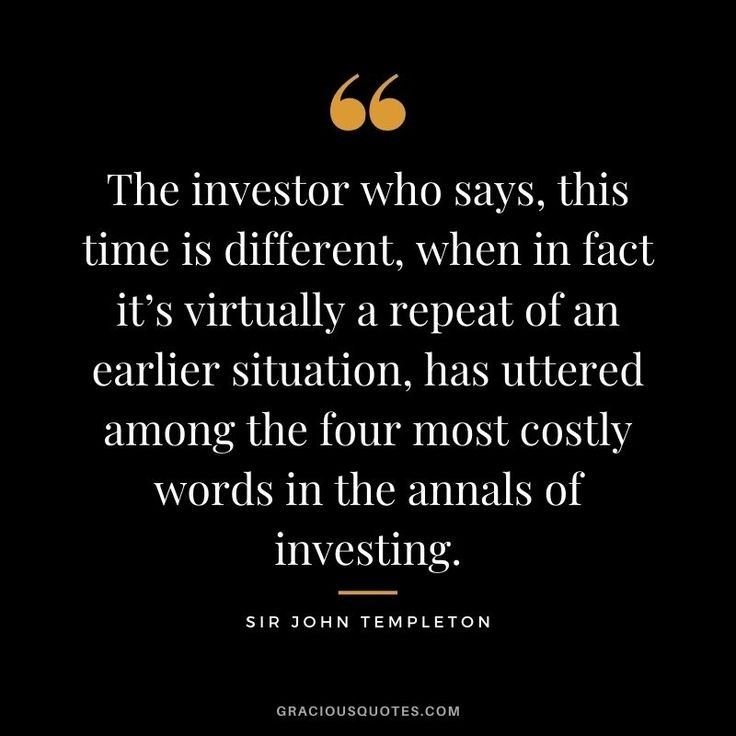Is This Time Different? Do Valuations Matter?: Exploring Extremes in the Stock Market
I’ve been fixated on a chart lately. I can’t get it out of my mind. It tests the boundaries of the historical record. This is the first in a series where I’ll explore valuation outliers, other variables, and their ability to predict/explain investment returns.
Let’s take a step back. At Aurora, we believe that future returns are a function of the price you pay for an investment. We believe that the value of something is a function of how much cash it will produce over its life and the level of risk associated with that cash generation. On a regular basis we are faced with tradeoffs. All else equal, we prefer to invest in companies with solid opportunities for growth. But what premium should you pay? How much is too much? The chart I’m about to show you is absurd.
Figure 1 Powered By FactSet: Invesco QQQ Trust Series I ETF (QQQ) Price/by Last 12 Month Earnings per Share Divided by Russell 2000 Value ETF (IWN) Price/Last 12 Month Earnings per Share from 07/31/2001 to 10/31/2023
I’ve chosen QQQ and IWN because they represent two extremes in the stock market. QQQ is a popular investment vehicle investors use to gain exposure to fast growing technology companies. IWN is an ETF that holds stocks in companies that are smaller and not popular with investors, a category known as “Small Cap Value”. In this chart, we are using trailing profits (EPS) as a proxy for cash flow and comparing how much investors are paying for $1 in profits for QQQ vs $1 in profits for IWN.
A “Random” Walk Through Time
At the beginning of this period, investors were paying roughly 2.5 times for profits of QQQ vs Small Cap Value. This is a hefty premium. The tech/telecom bubble burst and investors lost their love for growth opportunities. For a brief period in 2013, QQQ was actually priced cheaper than Small Cap Value stocks. Investors either placed no value on growth opportunities or believed that the technology-heavy QQQ companies would grow at a similar rate as small cap value companies. This is bonkers! The period that followed saw software “eat the world”, an AI boom, etc. As of 11/02/2023, investors are paying a whopping 3.2 times.
The market seems to be saying that either companies in QQQ are going to experience an unprecedented level of growth and/or small cap value companies are much worse businesses than they have been historically. But what does the data show about the relationship between relative valuation and future investment returns? I’m glad you asked.
We’ve long preached that investment decisions should be made with a long time horizon and this is a perfect example of why.
Figure 2 Powered by FactSet: Relative Last 12 Month P/E of QQQ to IWN Plotted Against the Proceeding 1 Year Total Returns of IWN Minus QQQ for the period 07/31/2001 to 10/31/2023
There does not appear to be a meaningful relationship between relative value and 1-year relative returns. If there is such a thing as a “Timing Tool”, valuation isn’t it. What about longer time periods?
Figure 3 Powered by FactSet: Relative Last 12 Month P/E of QQQ to IWN Plotted Against the Proceeding 5 Year Total Returns of IWN Minus QQQ for the period of 07/31/2001 to 10/31/2023
Now we should make a disclaimer. These investment vehicles have not been around long enough to draw solid conclusions based on the data alone. Correlation is not causation. However, it is reasonable to assume that at some price the growth opportunities in anything are overpriced/underpriced and should create opportunities for investors. When we value stocks, we make projections for the business itself to formulate our estimate of value. But on an aggregate basis, it appears that investors should have historically been willing to pay about twice as much for profits of the fast growing QQQ companies compared to the same level of profits for the unpopular small cap value companies. If history is a guide, when QQQ commanded little to no premium it tended to outperform IWN handily over the following 5 years. As of 11/02/2023, that number is 3.2X. Bonkers!
Conclusion
For patient investors, the historical data suggests a much better experience investing in small-cap value companies over the next 5 years compared to the faster-growing technology companies of QQQ. Maybe value does matter! I’ll wager that this time is no different.
Final Thoughts
At Aurora, we are constantly looking for attractive investment opportunities for our clients. While we tend to invest in individual stocks rather than ETFs like the two discussed, understanding how the market values these securities leads to insights about our own portfolio. We look for businesses with economic moats, quality balance sheets and attractive upside potential. This blog represents our thinking at the time of publication. If you are a DIY investor, use this only as a starting point for your research and be sure to do your own due diligence. For questions regarding our asset allocation and individual stock strategies, please reach out to us!
Invest Curiously,
Austin Crites, CFA
Austin Crites is the Chief Investment Officer of Aurora Asset Management, an Indianapolis-based subsidiary of Aurora Financial Strategies which is located in Kokomo, IN. He can be reached via email at austin@auroramgt.com. Investment Advisory Services are offered through BCGM Wealth Management, LLC, a SEC registered investment adviser. This blog does not constitute advice. This is not an offer to buy or sell securities. Advisor is not licensed in all states. Any mention of a particular security and related performance data is not a recommendation to buy or sell that security. BCGM Wealth Management, LLC manages its clients’ accounts using a variety of investment techniques and strategies, which are not necessarily discussed in the commentary. Investments in securities involve the risk of loss. Past performance is no guarantee of future results. Clients may own positions in the securities discussed.






